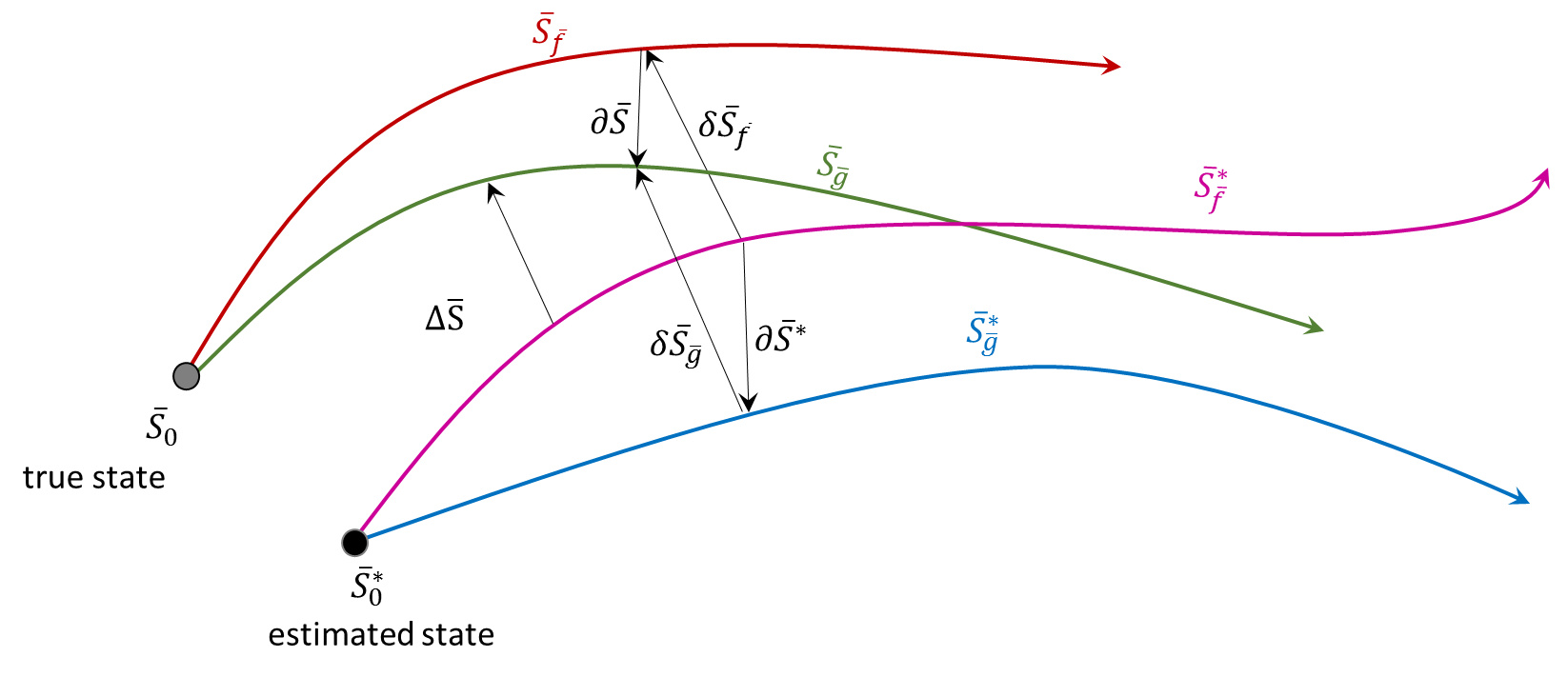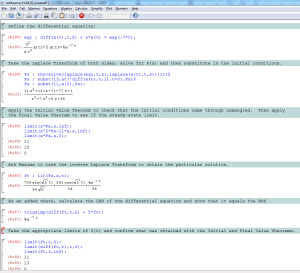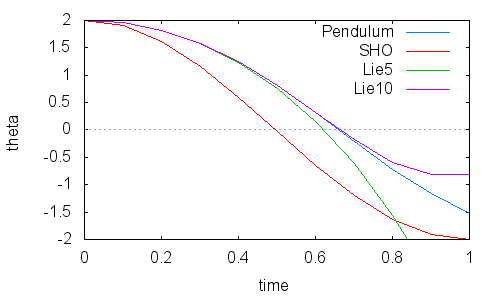On Matrices, Rows, and Columns
One of the most ubiquitous tools in the physical scientists toolbox is the use of linear algebra for organizing systems with multiple degrees of freedom. Since it is ubiquitous it is hardly a surprise that there are almost as many notations as there are authors. I suppose what I am about to present is peculiar to my way of thinking but I find it both insightful and appealing.
Take a matrix $$\mathbf{M}$$ and segregate it into column arrays labeled as $$|e_i\rangle$$ defined by:
\[ \mathbf{M} = \left[ \begin{array}{cccc} |e_1\rangle & |e_2\rangle & \ldots & |e_n\rangle \end{array} \right] \; \]
The use of the Dirac notation to specify the column arrays that comprise the original matrix is intentional.
Likewise segregate the inverse matrix, whose relationship to the original matrix is yet to be determined, into row arrays labeled as $$\langle \omega_j|$$ defined by:
\[ \mathbf{M}^{-1} = \left[ \begin{array}{c} \langle\omega_1| \\ \langle\omega_2| \\ \vdots \\ \langle\omega_n| \end{array} \right] \]
Since we will demand that the matrix inverse left-multiplying the matrix must be the identity
\[ \mathbf{M}^{-1} \mathbf{M} = \left[ \begin{array}{c} \langle\omega_1| \\ \langle\omega_2| \\ \vdots \\ \langle\omega_n| \end{array} \right] \left[ \begin{array}{cccc} |e_1\rangle & |e_2\rangle & \ldots & |e_n\rangle \end{array} \right] \; .\]
This particular product is between a $$N \times 1$$ matrix of row arrays and $$1 \times N$$ matrix of column arrays. Since the $$\langle \omega_j$$ are $$1 \times N$$ matrices and the $$| e_i \rangle$$ are $$N \times 1$$ and the subsequent products are $$ 1 \times 1 $$ arrays (i.e. numbers) arranged as $$N \times N $$ matrix.
\[ \mathbf{M}^{-1} \mathbf{M} = \left[ \begin{array}{cccc} \langle\omega_1|e_1\rangle & \langle\omega_1|e_2\rangle & \ldots & \langle\omega_1|e_n\rangle \\ \langle\omega_2|e_1\rangle & \langle\omega_2|e_2\rangle & \ldots & \langle\omega_2|e_n\rangle \\ \vdots & \vdots & \ddots & \vdots \\ \langle\omega_n|e_1\rangle & \langle\omega_n|e_2\rangle & \ldots & \langle\omega_n|e_n\rangle \end{array} \right] \]
In order for this matrix to be the identity the following relation
\[ \langle\omega_i|e_j\rangle = \delta_{ij} \]
must hold.
In an analogous fashion, the left-multiplication of the inverse by the original matrix gives
\[ \mathbf{M} \mathbf{M}^{-1} = \left[ \begin{array}{cccc} |e_1\rangle & |e_2\rangle & \ldots & |e_n\rangle \end{array} \right] \left[ \begin{array}{c} \langle\omega_1| \\ \langle\omega_2| \\ \vdots \\ \langle\omega_n| \end{array} \right] \; .\]
This particular product is between $$1 \times N$$ matrix of column arrays and $$N \times 1$$ matrix of row arrays. This leads to a $$1 \times 1$$ sum of outer products
\[ \mathbf{M} \mathbf{M}^{-1} = \sum_i |e_i\rangle\langle\omega_i| \; . \]
Setting this sum to the identity gives
\[ \sum_i |e_i\rangle\langle\omega_i| = \mathbf{Id} \; .\]
This formalism is most easy to understand when the matrix is a $$2 \times 2$$ matrix of the form
\[ \mathbf{M} = \left[ \begin{array}{cc} a & b \\ c & d \end{array} \right] \; .\]
The well known inverse is
\[ \mathbf{M}^{-1} = \frac{1}{ad-bc} \left[ \begin{array}{cc} d & -b \\ -c & a \end{array} \right] \equiv q \left[ \begin{array}{cc} d & -b \\ -c & a \end{array} \right] \; .\]
From these forms, it is easy to read off
\[ |e_1\rangle = \left[ \begin{array}{c} a \\c \end{array} \right] \; ,\]
\[ |e_2\rangle = \left[ \begin{array}{c} b \\d \end{array} \right] \; ,\]
\[ \langle \omega_1| = q \left[ \begin{array}{cc} d & -b \end{array} \right] \; , \]
and
\[ \langle \omega_2| = q \left[ \begin{array}{cc} -c & a \end{array} \right] \; ,\]
where $$q = a d – b c$$, which is the determinant of $$\mathbf{M}$$.
Working the matrix elements resulting from $$\mathbf{M}^{-1} \mathbf{M}$$, it is easy to see that
\[ \langle \omega_1 | e_1 \rangle = q \left[ \begin{array}{cc} d & -b \end{array} \right] \left[ \begin{array}{c} a \\c \end{array} \right] = q (ad-bc) = \frac{ad-bc}{ad-bc} = 1 \; , \]
\[ \langle \omega_1 | e_2 \rangle = q \left[ \begin{array}{cc} d & -b \end{array} \right] \left[ \begin{array}{c} b \\d \end{array} \right] = q (db-bd) = 0 \; ,\]
\[ \langle \omega_2 | e_1 \rangle = q \left[ \begin{array}{cc} -c & a \end{array} \right] \left[ \begin{array}{c} a \\c \end{array} \right] = q (-ca + ac) = 0 \; ,\]
and
\[ \langle \omega_2 | e_2 \rangle = q \left[ \begin{array}{cc} -c & a \end{array} \right] \left[ \begin{array}{c} b \\d \end{array} \right] = q (-cb + ad) = \frac{ad-bc}{ad-bc} = 1 \; .\]
Working the outer products resulting from $$\mathbf{M} \mathbf{M}^{-1}$$, it is also easy to see that
\[ | e_1 \rangle \langle \omega_1 | = q \left[ \begin{array}{c} a \\c \end{array} \right] \left[ \begin{array}{cc} d & -b \end{array} \right] = q \left[ \begin{array}{cc} a d & -a b \\ c d & -c b \end{array} \right]\]
and
\[ | e_2 \rangle \langle \omega_2 | = q \left[ \begin{array}{c} b \\d \end{array} \right] \left[ \begin{array}{cc} -c & a \end{array} \right] = q \left[ \begin{array}{cc} -b c & b a \\ -c d & a d \end{array} \right] \; .\]
Summing these two matrices gives
\[ | e_1 \rangle \langle \omega_1 | + | e_2 \rangle \langle \omega_2 | = q \left[ \begin{array}{cc} ad-bc & -ab + ab \\ cd – cd & a d – b c \end{array} \right] = \left[ \begin{array}{cc} 1 & 0 \\ 0 & 1 \end{array} \right] \; .\]
It all works, as if by magic, but it is simply a result of some reasonably well-structured definitions.



